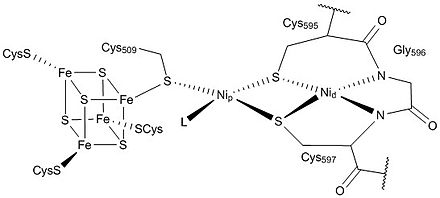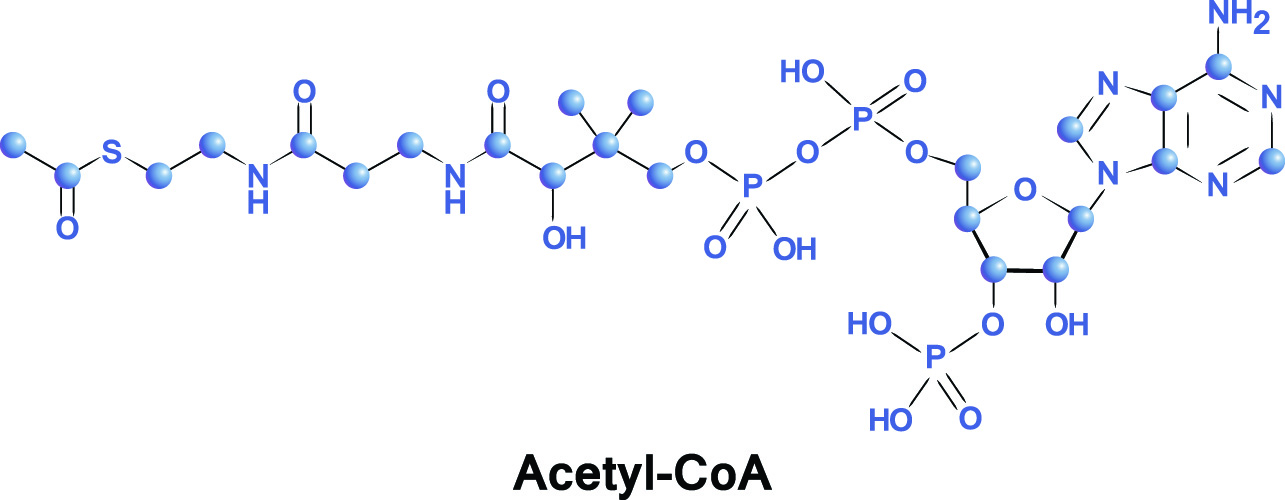Acetyl Co A | Specify the stoichiometric quantity of the involved cac intermediate produced per molecule of the Identify the possible point of entry of each absorbed amino acid into the cycle. Treat the entry of acetyl coa into the cycle as the first step and the formation of oxaloacetate as the last step. Dal punto di vista chimico si tratta di un tioestere, ovvero il prodotto della condensazione di un tiolo (che in questo caso è il coenzima a) e un acido carbossilico, che in questo caso è l'acido acetico. Later, the acetyl coa is completely oxidized into co 2 and h 2 o by entering the citric acid cycle.
There are two acc forms, alpha and beta, encoded by two different genes. Later, the acetyl coa is completely oxidized into co 2 and h 2 o by entering the citric acid cycle. Specify the stoichiometric quantity of the involved cac intermediate produced per molecule of the This process involves the release of one mole of co 2. Refer to the citric acid cycle (cac or tca cycle).

Identify the possible point of entry of each absorbed amino acid into the cycle. Treat the entry of acetyl coa into the cycle as the first step and the formation of oxaloacetate as the last step. Specify the stoichiometric quantity of the involved cac intermediate produced per molecule of the Later, the acetyl coa is completely oxidized into co 2 and h 2 o by entering the citric acid cycle. There are two acc forms, alpha and beta, encoded by two different genes. Dal punto di vista chimico si tratta di un tioestere, ovvero il prodotto della condensazione di un tiolo (che in questo caso è il coenzima a) e un acido carbossilico, che in questo caso è l'acido acetico. Its main function is to deliver the acetyl group to the citric acid cycle (krebs cycle) to be oxidized for energy production. Refer to the citric acid cycle (cac or tca cycle). Coenzyme a (coa, shcoa, coash) is a coenzyme, notable for its role in the synthesis and oxidation of fatty acids, and the oxidation of pyruvate in the citric acid cycle.all genomes sequenced to date encode enzymes that use coenzyme a as a substrate, and around 4% of cellular enzymes use it (or a thioester) as a substrate. This process involves the release of one mole of co 2.
Identify the possible point of entry of each absorbed amino acid into the cycle. Coenzyme a (coa, shcoa, coash) is a coenzyme, notable for its role in the synthesis and oxidation of fatty acids, and the oxidation of pyruvate in the citric acid cycle.all genomes sequenced to date encode enzymes that use coenzyme a as a substrate, and around 4% of cellular enzymes use it (or a thioester) as a substrate. Specify the stoichiometric quantity of the involved cac intermediate produced per molecule of the Later, the acetyl coa is completely oxidized into co 2 and h 2 o by entering the citric acid cycle. There are two acc forms, alpha and beta, encoded by two different genes.

Later, the acetyl coa is completely oxidized into co 2 and h 2 o by entering the citric acid cycle. Its main function is to deliver the acetyl group to the citric acid cycle (krebs cycle) to be oxidized for energy production. Refer to the citric acid cycle (cac or tca cycle). This process involves the release of one mole of co 2. Coenzyme a (coa, shcoa, coash) is a coenzyme, notable for its role in the synthesis and oxidation of fatty acids, and the oxidation of pyruvate in the citric acid cycle.all genomes sequenced to date encode enzymes that use coenzyme a as a substrate, and around 4% of cellular enzymes use it (or a thioester) as a substrate. Treat the entry of acetyl coa into the cycle as the first step and the formation of oxaloacetate as the last step. Dal punto di vista chimico si tratta di un tioestere, ovvero il prodotto della condensazione di un tiolo (che in questo caso è il coenzima a) e un acido carbossilico, che in questo caso è l'acido acetico. There are two acc forms, alpha and beta, encoded by two different genes. Specify the stoichiometric quantity of the involved cac intermediate produced per molecule of the Identify the possible point of entry of each absorbed amino acid into the cycle.
Coenzyme a (coa, shcoa, coash) is a coenzyme, notable for its role in the synthesis and oxidation of fatty acids, and the oxidation of pyruvate in the citric acid cycle.all genomes sequenced to date encode enzymes that use coenzyme a as a substrate, and around 4% of cellular enzymes use it (or a thioester) as a substrate. Specify the stoichiometric quantity of the involved cac intermediate produced per molecule of the Its main function is to deliver the acetyl group to the citric acid cycle (krebs cycle) to be oxidized for energy production. Refer to the citric acid cycle (cac or tca cycle). Later, the acetyl coa is completely oxidized into co 2 and h 2 o by entering the citric acid cycle.

Treat the entry of acetyl coa into the cycle as the first step and the formation of oxaloacetate as the last step. This process involves the release of one mole of co 2. Its main function is to deliver the acetyl group to the citric acid cycle (krebs cycle) to be oxidized for energy production. Refer to the citric acid cycle (cac or tca cycle). Identify the possible point of entry of each absorbed amino acid into the cycle. Specify the stoichiometric quantity of the involved cac intermediate produced per molecule of the Dal punto di vista chimico si tratta di un tioestere, ovvero il prodotto della condensazione di un tiolo (che in questo caso è il coenzima a) e un acido carbossilico, che in questo caso è l'acido acetico. Coenzyme a (coa, shcoa, coash) is a coenzyme, notable for its role in the synthesis and oxidation of fatty acids, and the oxidation of pyruvate in the citric acid cycle.all genomes sequenced to date encode enzymes that use coenzyme a as a substrate, and around 4% of cellular enzymes use it (or a thioester) as a substrate. Later, the acetyl coa is completely oxidized into co 2 and h 2 o by entering the citric acid cycle. There are two acc forms, alpha and beta, encoded by two different genes.
Acetyl Co A: Refer to the citric acid cycle (cac or tca cycle).
Konversi Kode